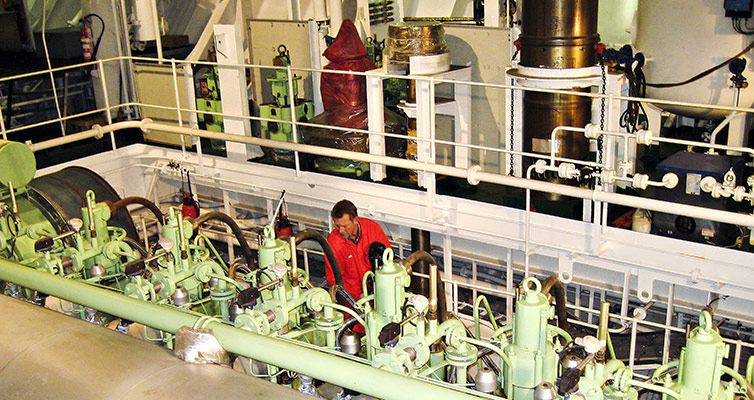Our environmental impacts
Our largest actual and potential impacts on the environment can be divided into three broad categories: emissions of sulphur and nitrogen oxides in connection with burning bunker oil, the spreading of organisms due to the discharge of ballast water and oil spills resulting from a collision or grounding In all these areas, we conduct extensive work to reduce or completely eliminate our impacts.

Emissions from Concordia Maritime’s fleet
Source: Stena AB Public Affairs and Sustainability
Emissions of sulphur and nitrogen oxides
In ship operation, our main impact is emissions of hazardous substances related to fuel consumption. One of the foremost challenges is to reduce emissions of sulphur and nitrogen oxides, greenhouse gases and other harmful particles produced during the burning of bunker oil.
The fuel efficiency project which has been in progress since 2012 has brought major improvements. Since the project began, fuel efficiency measured as freighted cargo (tonnes) in relation to fuel consumed (tonnes) has increased by 12 percent. The reduced bunker consumption has so far resulted in an annual reduction in carbon dioxide emissions of just over 3,800 tonnes and sulphur dioxide emissions of 40 tonnes.
The increased efficiency is partly due to the contribution of the suezmax eco tanker Stena Supreme, although most of the increase in efficiency has been achieved by more detailed monitoring of the vessels' energy consumption, which in turn has led to operational measures such as reduced speed and closer and more frequent monitoring of fuel consumption.
The target going forward is to achieve an average reduction of 0.3 mt in fuel consumption per vessel per day at sea. This will be achieved by further fuel efficiency measures and increased controll. As a consequence of the new sulphur directive, which came into effect on 1 January 2015, the limit value for maximum sulphur content in fuel used in the Baltic Sea, North Sea and English Channel has been lowered from the previous 1 percent to 0.1 percent. For Concordia Maritime, this is expected to result in an annual reduction in sulphur-related emissions of 20 percent.
Discharge of ballast water
The discharge of ballast water close to the coast is another environmental hazard. Organisms that are transported with the ballast water pass from one ecosystem to another and can cause great damage to the local environment. We are still lacking an international regulatory framework and the technology for killing organisms in large volumes of ballast water. All our vessels follow a Ballast Water Management Plan, produced by our partner Northern Marine Management (NMM) and based on existing international guidelines.
Oil spills
The largest risk associated with tanker shipping is the risk of an oil spill in connection with a grounding, collision or some other accident. However, with the increasing modernisation and safety of the global tanker fleet in recent years, the number of oil spills has declined dramatically and they are now very rare. This trend is due to a combination of comprehensive improvement work on the part of the world's shipping companies and tougher requirements from regulators, customers and other stakeholders.
For Concordia Maritime, safety work constitutes one of the cornerstones of the business. The possibility of accidents occurring can never be excluded. For this reason, substantial resources are invested in continuously developing and optimising vessels, procedures and crews. The goal is to prevent the risk of accidents arising and to minimise the damage if an accident should nevertheless occur. Safety work is carried out on several different levels – during the design and construction of the actual vessel and its equipment and as part of a continuous process of identifying potential risks and dangerous operations. Strict reporting procedures give full control over all incidents – whether in port or at sea.

